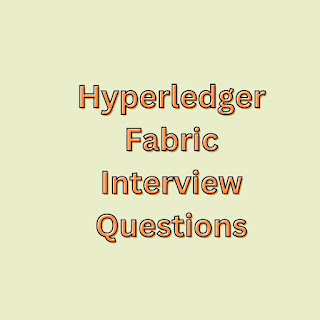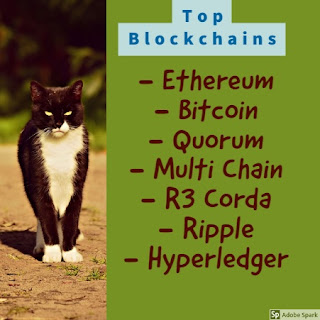Hyperledger is one of the top-listed blockchains. This architecture follows R3 Corda specifications. Sharing the interview questions with you that I have prepared for my interview.
Though Ethereum leads in real-time applications. The latest Hyperledger version is now ready for production applications. It has now become stable for production applications.
The Hyperledger is now backed by IBM. But, it is still an open source. These interview questions help you to read quickly. The below set of interview questions helps you like a tutorial on Hyperledger fabric.

Hyperledger Fabric Interview Questions
1). What are Nodes?
In Hyperledger the communication entities are called Nodes.
2). What are the three different types of Nodes?
- Client Node
- Peer Node
- Order Node
The Client node initiates transactions. The peer node commits the transaction. The order node guarantees delivery.
3). What is Channel?
A channel in Hyperledger is the subnet of the main blockchain. You can have n number of Channels in a Blockchain.
4). Can a Peer or Node be a part of many channels?
Yes, can be part of many channels.
5). Can the transactions within a Subnet be visible to the public?
No, these are visible to people for subscribers of the particular Channel.
6). Are the smart contract and security policies private to each subnet?
Yes, each subnet should have its own Smart contract and Security policies.
7). What is the difference between a Chain code and a Smart contract?
In reality, both are the same.
8). Which languages are popular to write chain code?
GO and JAVA.
9). Where the Chain code executes in the Blockchain environment?
Those run in Docker, which is a
Sandbox.
10). What is Identity management?
Identity management is an inbuilt service, that handles Security, Members, Roles, and digital signatures of accounts.
11). What is Certification authority?
A). Fabric CA takes care of registration, issuance of e-certificates, role assignment, renewals, and revocation to the various nodes before they can start communicating in the network.
12). What Consensus Mechanism?
In HyperLedger each node or peer represents a client. It is a complex process. The Hyperledger uses the Practical Byzantine Fault Tolerance or PBFT model.
13). How is the ledger entry made?
It starts with peer authentication, Transaction verification, and informing to all peers when a block is added.
14). The top tools used in developing blockchain applications?
These are Java, node.js, NPM, and other editing tools.
15). What is the blockchain composer?
The blockchain composer is a development piece, that you can develop quickly. Once you are happy with the requirement, you can deploy it into blockchain fabric.
16). What is HyperLedger SawTooth Lake?
It is an open-source project backed by Intel.
17). What is Proof of Elapse Time?
The PoET is the consensus algorithm that is designed to create a fair consensus model, which mainly focuses on efficiency.
18). What is Hyperledger Indy?
HyperLedger Indy is an open-source project for supporting independent identity on BlockChain and distributed ledgers. Indy provides tools, libraries, and reusable components for providing digital identities.
19). What is Hyperledger Burrow?
It is sponsored by Intel and Linux Foundation. Hyperledger Burrow is a permissioned Ethereum smart-contract blockchain based on the Monax platform. It executes Ethereum smart contract code on a permissioned virtual machine. Burrow provides transaction finality and high transaction throughput on a proof-of-stake PBFT-based consensus engine.
20) BaaS mean?
Blockchain as a service you can say as BaaS. The top leaders in this line are Amazon, IBM, Microsoft, and Google.




.jpg)
wqe
ReplyDeletesdfffffffffff
ReplyDeleteGood Questions for beginners, but not for Advanced or Experts
ReplyDelete